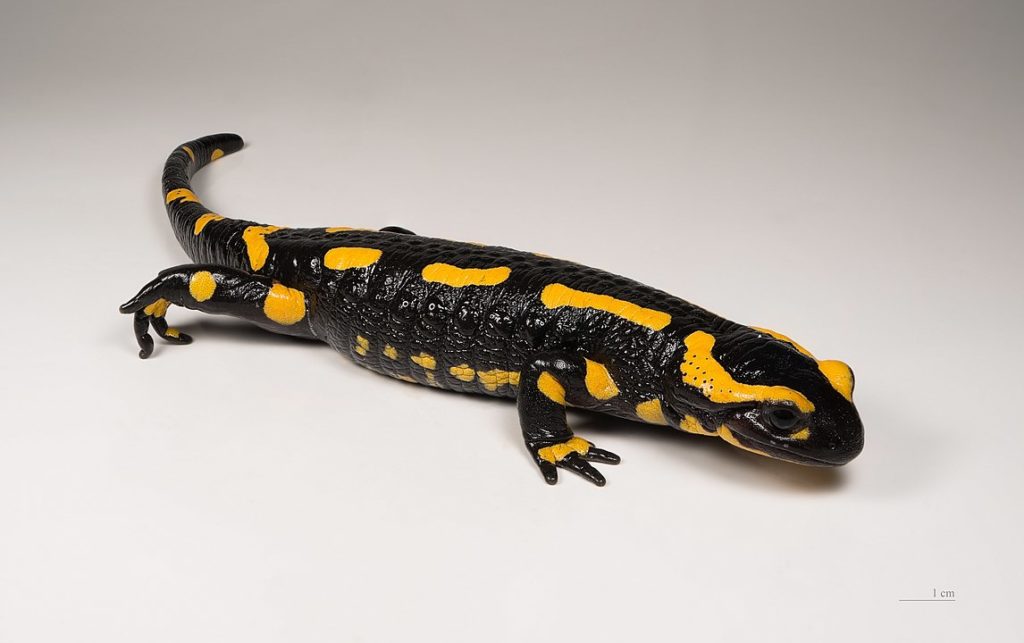Climate change and a fungus present a threat to one of Belgium’s most particular species of wildlife, biologist Dirk Draulans reports in Knack magazine this week.
The fire salamander (Salamandra salamandra) is a kind of salamander found across Europe. It lives on the forest floor, and in Belgium is more common in Wallonia than in Flanders, thanks to the greater presence in the south of deciduous forests, where the salamander likes to hide out along fallen leaves.
Contrary to legend, the salamander does not come out of fire. That misconception arose when he was seen to emerge from firewood logs as they were thrown on the flames – escaping from his hiding place, in fact.
His exotic appearance is accentuated by his colouring: mainly black and yellow, in proportions that vary from individual to individual. The bright colouring is to warn potential predators of his trump card: he is quite severely toxic.
And although he is classified as an amphibian, he lives entirely on land, but must have a source of clean water nearby for the female to lay her eggs in.
The fire salamander lives on prey including snails, insects, spiders, worms and slugs, although he will occasionally down the odd baby newt or young frog.
The threat from climate change comes to light from an analysis by biologist Loïc van Doorn of the Flemish Institute for Nature- en Forest Research (INBO), who looked at the salamander population in one of its main habitats: the Sonien Forest at the edge of Brussels.
The forest is home to about 2,000 fire salamanders, but they have to rely on only two steams for the development of their larvae. The eggs develop inside the female, and then are deposited in the form of larvae in some clean water, where they grow over the next two months before emerging once and for all onto land.
The two streams supporting 2,000 salamanders, however, are subject to climate change, particularly in early summer where rising temperatures lower the water levels – and just at a time when the salamanders need them most.
And that’s not all. Another threat is an Asian fungus, brought into the country on exotic species imported by collectors – not always legally.
The fungus attacks the skin of the creature, with eventually fatal results. It is prevalent in areas close to woodland paths and in areas with low biodiversity, close to mankind. So far, however, it has not been found in the Sonien Forest.

